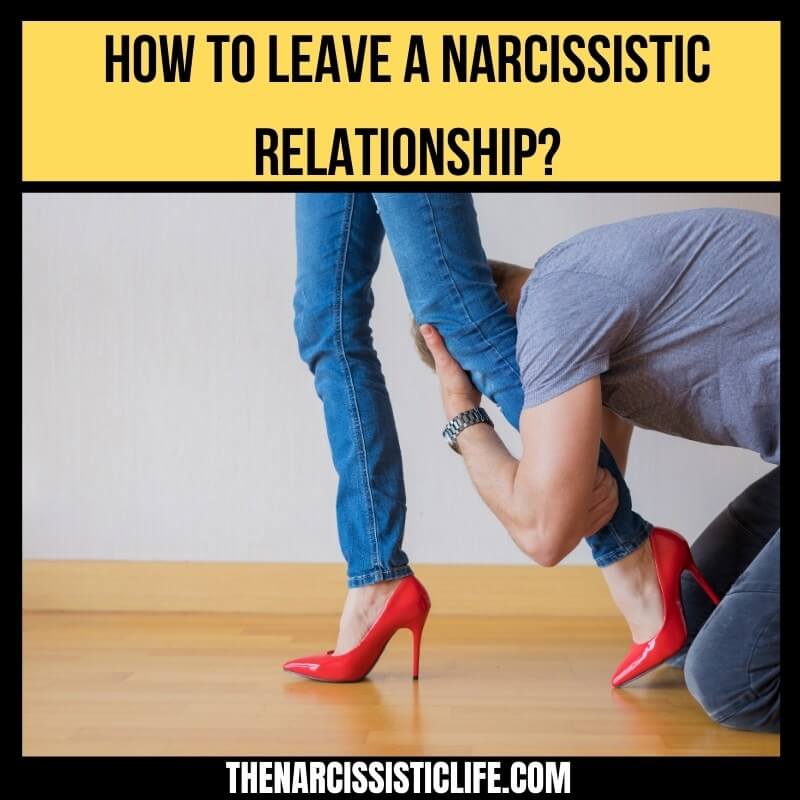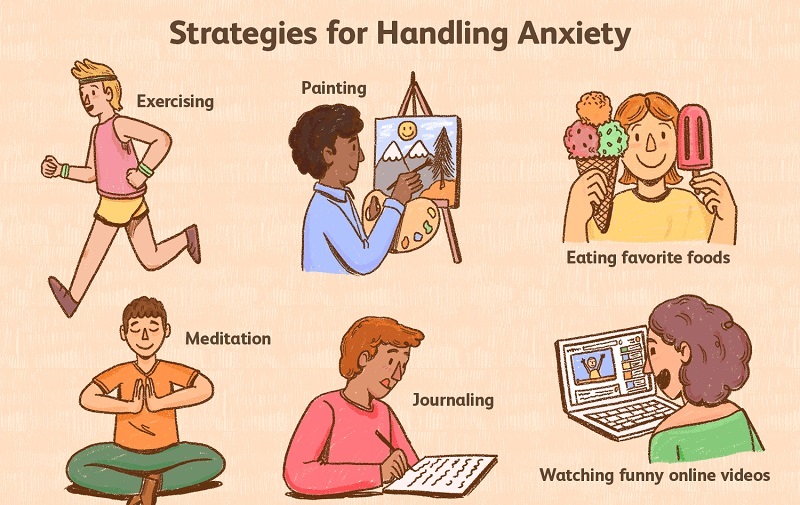Physical boundaries examples
Setting Boundaries in Your Relationships
Let’s Talk About Boundaries
As the leaves begin to change colors and fall from the trees and the air turns crisp and cool, it becomes apparent that spooky season is upon us. However, there may be something even scarier than horror movies, haunted houses, and Halloween decor: setting boundaries.
What are Boundaries?
As Henry Cloud asserts, “boundaries define us. They define what is me and what is not me. A boundary shows me where I end and someone else begins, leading me to a sense of ownership. Knowing what I am to own and take responsibility for gives me freedom.” Boundaries are standards we set in our relationships that let others know what behavior we find acceptable and what behavior we will not tolerate. By setting boundaries, we teach people how to treat us, and we honor that we are only responsible for our own feelings and behaviors – not the feelings and behaviors of others.
What Types of Boundaries are There?
There are a plethora of types of boundaries including physical, emotional, sexual, material, and time boundaries. Physical boundaries encompass touch, your personal space, and your physical needs. For example, you can create limits about how or when you are touched as well as who you are comfortable touching you. You are also able to determine who is allowed into your personal space or home. In addition, you are in control of when you need to eat or sleep or otherwise meet your physiological needs.
Emotional Boundaries
Emotional boundaries are how you recognize and honor your feelings as well as how much energy you are able to provide in relationships at any given time. You are able to decide when you share feelings or certain information about yourself as well as when you are available to listen to others who want to share their feelings with you.
Sexual Boundaries
Sexual boundaries revolve around consent and respecting someone’s sexual preferences or expression. Material boundaries are boundaries you set around your personal items and what you are okay lending to others. Lastly, boundaries that have to do with time allow you to prioritize your needs and set aside time for what is important to you without overcommitting. This may look like scheduling time for yourself to engage in a hobby or self-care and making sure that work or other obligations don’t interfere.
Lastly, boundaries that have to do with time allow you to prioritize your needs and set aside time for what is important to you without overcommitting. This may look like scheduling time for yourself to engage in a hobby or self-care and making sure that work or other obligations don’t interfere.
How Do You Set Boundaries?
Boundaries are not always easy to communicate or enforce, however. Setting boundaries at work or in our personal relationships with friends and family can be incredibly challenging. The first step is to identify what you would like your boundary to be. Is your boundary flexible or rigid? Does your boundary change depending on the person or situation?
Imagine yourself as a house and your boundaries as keeping the house protected and secure. With some people in some situations, you may feel most protected by having a fence or a security system whereas, with other people in other situations, you may leave a key under the mat that grants them access to the front door.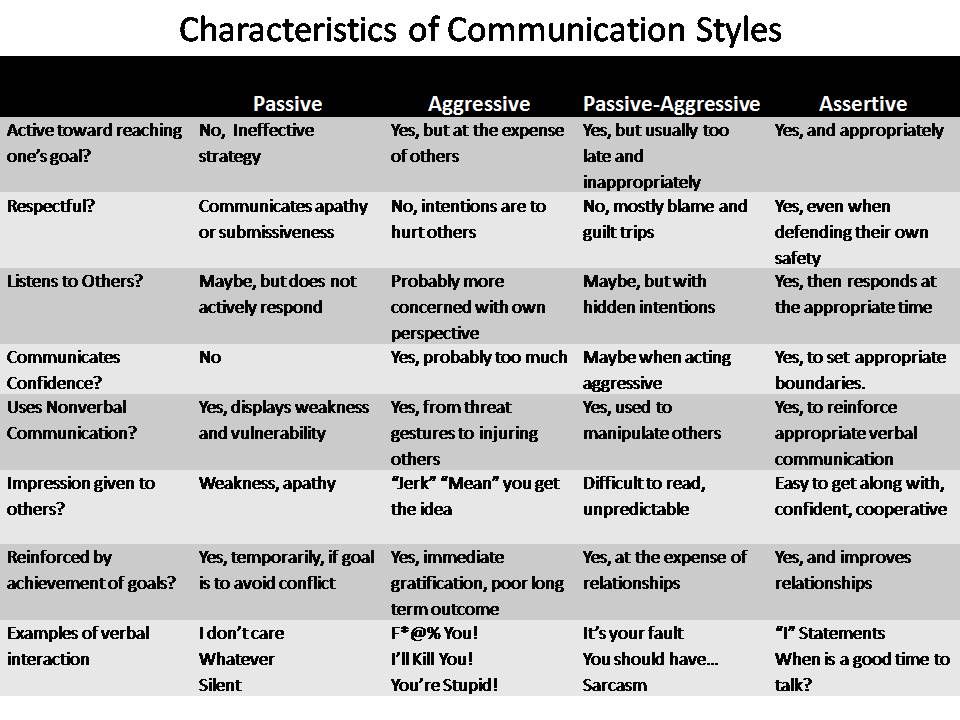 Boundaries are incredibly personal, and they can be changed or adjusted as needed.
Boundaries are incredibly personal, and they can be changed or adjusted as needed.
Try this Acronym: DEARMAN
Once you have identified your boundary and what action you will take if it is not respected, you can then communicate those boundaries to others. Sometimes people unintentionally cross our boundaries – not because they want to harm us but because they don’t know what our boundaries are. It is up to us to express our needs and boundaries. Using the Dialectical Behavior Therapy skill DEARMAN is a good place to start. The “DEAR” describes what we do when setting a boundary, and the “MAN” piece describes how we set the boundary. The acronym is as follows:
D – describe the facts of the situation
E – express your feelings about the situation using “I” statements
A – assert your needs or ask directly for what you want
R – reinforce why the person should respect your boundary or need; this can be as simple as a thank you
M – stay mindful; keep focused on your goal
A – appear confident by standing up straight, make eye contact, and speak up
N – negotiate; this can look like providing space for the other person to express their needs as well
What if People Don’t Respect My Boundaries?
Of course, just because you set boundaries doesn’t mean that others will always respect them.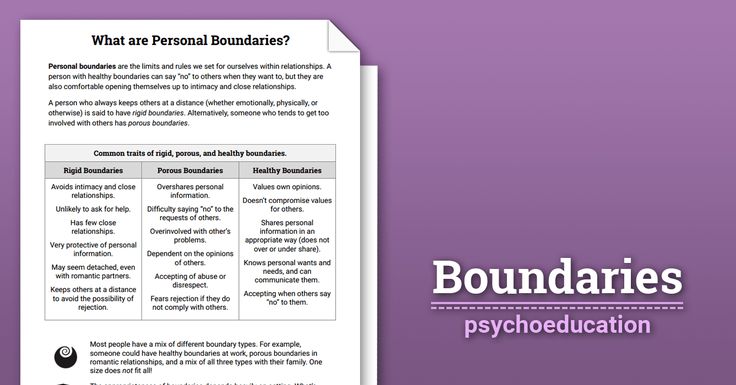 For example, people may engage in boundary-crossing behavior. When others cross our boundaries, we may experience feelings of resentment, anger, disappointment, or even violation. It is also possible that we may feel invalidated and disrespected, which can lead to feelings of shame. If you notice yourself justifying someone else’s poor behavior or even feeling like you have lost your power to choose or make decisions for yourself, it may be important to reexamine what your boundaries look like and how to uphold them.
For example, people may engage in boundary-crossing behavior. When others cross our boundaries, we may experience feelings of resentment, anger, disappointment, or even violation. It is also possible that we may feel invalidated and disrespected, which can lead to feelings of shame. If you notice yourself justifying someone else’s poor behavior or even feeling like you have lost your power to choose or make decisions for yourself, it may be important to reexamine what your boundaries look like and how to uphold them.
Boundaries are Not a Way of Controlling People
We must remember that boundaries are not a way of controlling people or their responses to us; instead, boundaries are a way of determining how we will respond. If someone has crossed a boundary, you can remind them of your boundary. If they continue to disrespect it, you are allowed to remove yourself from the situation or even distance yourself from the relationship. This might look like saying, “If you continue to yell at me or call me names, I am going to hang up the phone. I will only discuss this with you if you are willing to respect my boundaries.”
I will only discuss this with you if you are willing to respect my boundaries.”
Time to Examine the Relationship?
If an individual in your life consistently and repeatedly crosses boundaries and doesn’t change their behavior, it may be worthwhile to examine the relationship and if it is a beneficial addition to your life and mental wellbeing. Remember, just because someone doesn’t like your “no,” it doesn’t mean that you should’ve said “yes.”
Looking for some help discussing and setting boundaries? Schedule an appointment with one of our therapists today. Call 855-771-0404 or Connect with us here.
CONNECT
855-771-0404
[email protected]
The 6 Types Of Healthy Boundaries & How To Maintain Them
Because so few of us understand what boundaries actually are, we rarely see evidence of them working. But when they do, you feel it—it does wonders for your mental and relational health.
What healthy boundaries look like.
Boundaries are what happen when you can sense yourself and what you need and want and access your voice to speak to those things. We all have "limits," and we all experience violations of our limits.
We all have "limits," and we all experience violations of our limits.
Most of the time, people are not trying to violate your limits—they just aren't aware of what they are. Sometimes, this is because we are not clear with ourselves or other people about what we want or need.
Here are six boundaries you deserve to have and what they might look like in practice:
1. Physical boundaries
Physical boundaries include your needs for personal space, your comfort with touch, and your physical needs like needing to rest, eat food, and drink water.
It is OK to let people know that you don't want to be touched or that you need more space. It is also OK to say that you are hungry or that you need to rest.
Healthy physical boundaries might sound like:
- "I am really tired. I need to sit down now."
- "I am not a big hugger. I am a handshake person."
- "I need to eat. I am going to go grab something."
- "I am allergic to [insert here], so we can't have that in our home.
 "
" - "No. I don't want you to touch me like that."
- "Don't go into my room without asking first."
Advertisement
This ad is displayed using third party content and we do not control its accessibility features.
Physical boundary violations feel like receiving inappropriate or unwanted touch, being denied your physical needs (told to keep walking when you are tired or that you need to wait to eat or drink), or having someone come into your personal space in a way that is uncomfortable (entering your room without permission, for example). This can vary on a spectrum from mild to severe. The most severe violations result in serious physical abuse or neglect.
2. Emotional boundaries
Emotional boundaries are all about respecting and honoring feelings and energy. Setting emotional boundaries means recognizing how much emotional energy you are capable of taking in, knowing when to share and when not to share, and limiting emotional sharing with people who respond poorly. Respecting emotional boundaries means validating the feelings of others and making sure you respect their ability to take in emotional information.
Respecting emotional boundaries means validating the feelings of others and making sure you respect their ability to take in emotional information.
It might sound like:
- "When I share my feelings with you and get criticized, it makes me totally shut down. I can only share with you if you are able to respond respectfully to me."
- "I am so sorry you are having such a tough time. Right now, I am not in a place to take in all of this information. Do you think we can come back to this conversation later?"
- "I am having a hard time and really need to talk. Are you in a place to listen right now?"
- "I really can't talk about that right now. It isn't the right time."
Advertisement
This ad is displayed using third party content and we do not control its accessibility features.
Emotional boundary violations include:
- Dismissing and criticizing feelings
- Asking questions that are not appropriate for the relationship
- Reading or going through personal and emotional information
- Asking people to justify their feelings
- Assuming we know how other people feel
- Telling other people how they feel
- "Emotionally dumping" on people without their permission
- Sharing inappropriate emotional information with your children
3.
 Time boundaries
Time boundaries Your time is valuable, and it is important to protect how it is utilized. Setting time boundaries is incredibly important at work, home, and socially. Setting time boundaries means understanding your priorities and setting aside enough time for the many areas of your life without overcommitting. When you understand your priorities, it is much easier to limit the amount of time you are giving to other people.
Healthy time boundaries might sound like:
- "I can't come to that event this weekend."
- "I can only stay for an hour."
- "Do you have time to chat today?"
- "I would love to help, but I would be overcommitting myself. Is there another time?"
- "We have family time on Sundays, so we won't make it."
- "I am happy to help with that. My hourly rate is…"
Advertisement
This ad is displayed using third party content and we do not control its accessibility features.
Violated time boundaries looks like asking professionals for their time without paying them, demanding time from people, keeping people in conversations or on tasks for longer than we told them we would, showing up late or canceling on people because we overcommitted, and contacting people when they said they would be unavailable.
4. Sexual boundaries
Healthy sexual boundaries include consent, agreement, respect, understanding of preferences and desires, and privacy.
Healthy sexual boundaries include:
- Asking for consent
- Discussing and asking for what pleases you
- Requesting condom use if you want it
- Discussing contraception
- Saying no to things that you do not like or that hurt you
- Protecting the privacy of the other person
Advertisement
This ad is displayed using third party content and we do not control its accessibility features.
This might sound like:
- "Do you want to have sex now?"
- "Is this comfortable for you?"
- "Tell me what you like."
- "Tell me what you don't like."
- "I don't like that. Let's try something different."
- "I don't want to have sex tonight. Can we cuddle instead?"
- "I am really into [insert desire here]. Is that something you would feel comfortable with?"
Sexual boundary violations include:
- Sulking, punishing, or getting angry if someone does not want to have sex
- Not asking for consent
- Pressure to engage in unwanted sexual acts
- Unwanted sexual comments
- Leering
- Lying about contraceptive use
- Lying about your health history
- Criticizing the other person's sexual preferences
- Unwanted touch, assault, or rape
5.
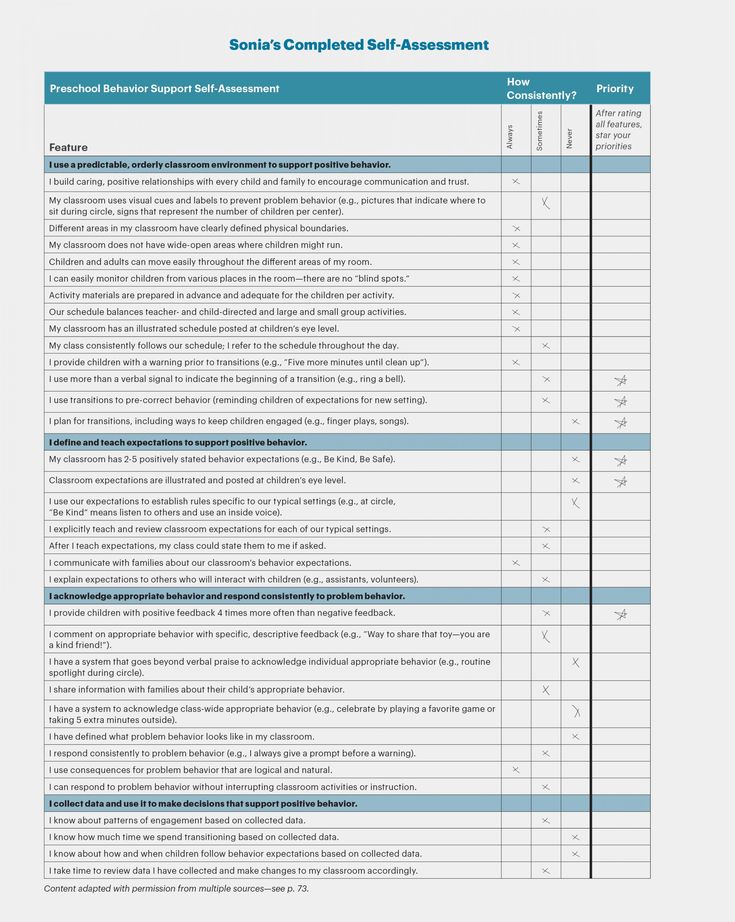 Intellectual boundaries
Intellectual boundaries Intellectual boundaries refer to your thoughts, ideas, and curiosity. Healthy intellectual boundaries include respect for the ideas of other people, and they can be violated when your thoughts and curiosity are shut down, dismissed, or belittled. Respectfulness and willingness to dialogue and understand are important here.
Healthy intellectual boundaries also mean considering whether or not it is a good time to talk about something.
They might sound like:
- "I know we disagree, but I won't let you belittle me like that."
- "I would love to talk about this more, but I don't think talking about it during Thanksgiving dinner is the best time."
- "When we talk about this, we don't get very far. I think it is a good idea to avoid the conversation right now."
- "I can respect that we have different opinions on this."
Does this mean that you need to be accepting of all thoughts and opinions? Absolutely not. It is also important to learn to recognize the difference between healthy and unhealthy discourse. If someone is sharing an opinion that is inherently harmful—i.e., racism, sexism, xenophobia, homophobia, etc.—then you have every right to put a hard line in the sand. You can set the boundary in your own way. It might sound like letting the person know you do not tolerate that kind of talk, distancing yourself from them, or cutting off. You do not have to have "intellectual" discourse with someone who is violating you or other people.
It is also important to learn to recognize the difference between healthy and unhealthy discourse. If someone is sharing an opinion that is inherently harmful—i.e., racism, sexism, xenophobia, homophobia, etc.—then you have every right to put a hard line in the sand. You can set the boundary in your own way. It might sound like letting the person know you do not tolerate that kind of talk, distancing yourself from them, or cutting off. You do not have to have "intellectual" discourse with someone who is violating you or other people.
6. Material boundaries
Material boundaries refer to items and possessions like your home, car, clothing, jewelry, furniture, money, etc. It is healthy to understand what you can and cannot share and how you expect your items and materials to be treated by the people you share them with.
Having limits on how your material items are treated is healthy and prevents resentment over time.
This might sound like:
- "I can't lend out my car.
 I am the only person on the insurance."
I am the only person on the insurance." - "We can't give any more money. We would be happy to help in another way."
- "Sure! I am happy to share my dress with you. Just a heads-up, I do need it back by Friday."
Material boundaries are violated when your things are destroyed or stolen or when they are "borrowed" too frequently. Another material violation is the use of materials (money and possessions) to manipulate and control relationships.
The more we set boundaries, the more we recognize them. In setting boundaries, we help people show up for us, and we also become better at showing up for them.
In the words of Brené Brown, "Clear is kind."
6 types of personal boundaries that you have every right to - Woman Delice
We wrote about how to set personal boundaries quite recently (see the post "Universal formula"), and today we want to talk about which boundaries are important be able to arrange and protect.
In general, there is a lot of misunderstanding around the topic of "personal boundaries", and someone believes that an excessive passion for protecting one's boundaries borders on sociopathy.
But in fact, most psychologists argue that healthy boundaries and mutual respect for such boundaries (that is, not only protecting one's own, but also respecting others) is the key to strong and healthy relationships. In the family, in the team, and in society as a whole.
HEALTHY BORDERS
What is “healthy boundaries” anyway? Elizabeth Earnshaw, a clinical psychiatrist and family psychologist, argues in her book A Better Life Therapy that healthy boundaries can be achieved if you stay in touch with your feelings, know what you need, and are not afraid. talk about it.
In fact, most people do not aim to violate your boundaries at all, most often they are simply not aware that their actions cause you discomfort. Our society as a whole is geared towards hiding our feelings and emotions as much as possible, and tolerating the violation of personal boundaries for as long as possible (this is called “good parenting”).
However, the correct setting of boundaries does not violate the generally accepted norms of communication, you just need to understand how to do it correctly.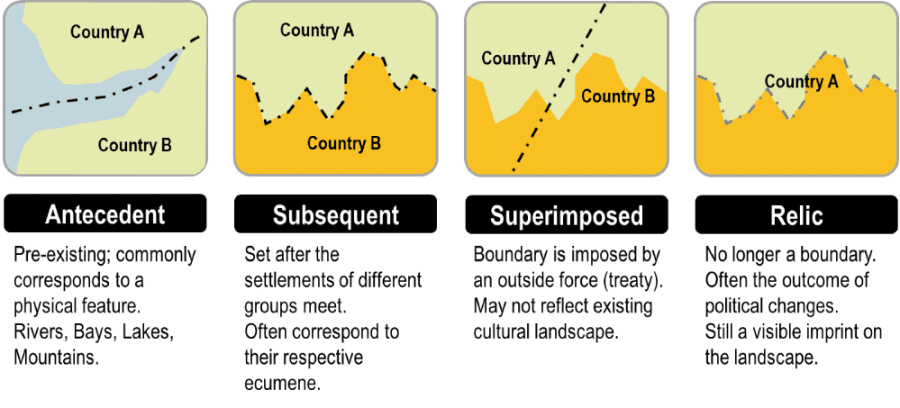 And first you need to figure out what, in principle, the boundaries are.
And first you need to figure out what, in principle, the boundaries are.
PHYSICAL BORDERS
Physical boundaries include the concept of personal space, the size of which is different for everyone. It also includes the right to satisfy all the physiological needs of the body (the need for food, sleep, etc.), the deprivation of which is one of the grossest forms of violence (for example, punishing a child with hunger).
It is perfectly normal to let others know that you are uncomfortable with some form of physical contact or that you are experiencing physiological needs. Here's what it looks like in practice:
- "Sorry, I don't like hugging, let's get by with a handshake"
- "I need something to eat, let's talk later"
- "Please don't come into my room without knocking"
- “I am tired and cannot continue this conversation now, I need to rest”
Violation of physical boundaries can take a variety of forms: someone may come too close to you during communication, and this can strain you, someone may insist on their own (for example, demand to continue walking, although you are tired and you need relaxation).
In any case, it is important to remember that you have every right to set such boundaries, and to respect this right in other people.
EMOTIONAL BORDERS
Emotional boundaries are how much of your psychic energy you are ready to give to other people. This is the ability to share and support other people, without scooping out one's resource to the bottom, and without allowing all one's psychic powers to be taken away.
What does breaking emotional boundaries look like? For example, the habit of someone in your environment to use you as a dumping ground for their emotional negativity. Such a person calls you when he feels bad and dumps all his suffering on your head, without asking if you are ready to digest it all.
In general, violations of emotional boundaries include:
- non-constructive and aggressive criticism;
- inappropriate or too personal questions;
- ignoring the emotions and feelings of another person;
- dumping one's feelings and emotions on another person without permission;
- viewing personal information without permission, dissemination of this information.

What does setting emotional boundaries look like? For example:
- “Thanks for the criticism, but the way you phrase it hurts me. I can’t perceive normally and constructively your words, because they offend me.
- “I sincerely sympathize with you, but right now I do not have the strength to give you full support. Let's continue this conversation later."
At the same time, do not forget about respecting the emotional boundaries of other people: “I feel very bad and need support, do you have the opportunity to listen to me?”
@thomastasyTIME LIMITS
Time is priceless, we all have a limited supply of time, and time stolen or wasted is irreplaceable (unlike other resources). Setting healthy time boundaries means that you clearly understand your priorities, know how to leave behind what is not your priority right now, and do not subscribe to everything.
When you yourself know what is important to you, it is easier for you to set time limits when communicating with other people:
- “I only have half an hour to discuss this”
- "I'm spending time with my family on Saturday, so I won't be able to join you"
- “I'd love to help, but right now I don't have time for that.
 I can offer my help next Wednesday, if that suits you.”
I can offer my help next Wednesday, if that suits you.” - “I can help you with this question, an hour of my work is worth…”
Time trespassing includes:
- Seeking professional advice/help in your own time and without pay; 90,023 lates that disrupt the other person's schedules and force them to adjust;
- communication that takes more time than the interlocutor is ready to spend on it;
- any contacts at the time that the interlocutor initially designated as private and closed for communication.
SEX LIMITS
There are no generally accepted rules and regulations regarding sexual boundaries - each couple sets such boundaries for themselves. Healthy sexual boundaries include respect for a partner's feelings and desires, trust, which means communicating freely about what the partner likes/accepts and vice versa.
Healthy sexual boundaries also include the right to "no" any of the partners in any situation.
Sexual violations include:
- coercion, physical or emotional;
- aggression in response to intimacy refusal;
- coercion to forms of intimacy that are uncomfortable for one of the partners;
- lies about the use of contraceptives;
- lying / hiding facts about diseases;
- criticism of partner's desires or physical form;
- any action that is performed without the prior consent of the partner.
INTELLIGENT BORDERS
Intellectual boundaries include respect for other people's opinions and ideas, and acceptance of the fact that everyone is entitled to their own point of view. Intellectual boundaries also include the right of a person not to share his opinion on any issue if he does not want to do this in any situation.
An intellectual boundary line might look like this:
- “I would love to exchange opinions on this subject, but not during a family dinner. Let's come back to this topic another time.
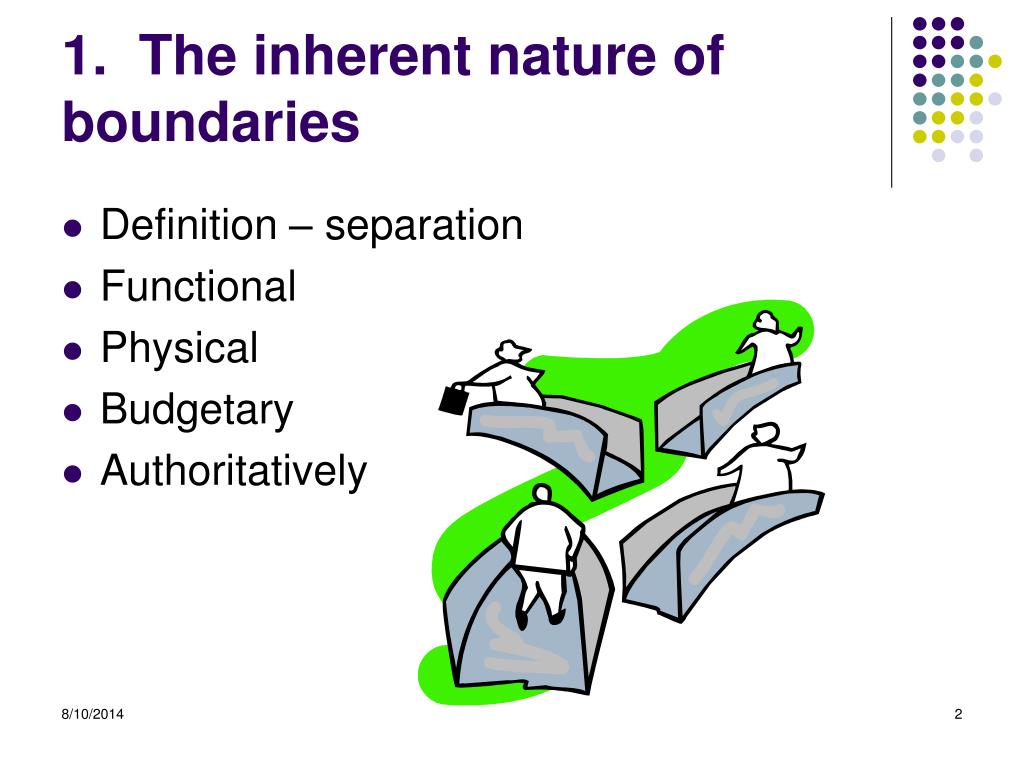 "
" - “I don't share your point of view and I don't like the tone of our conversation. If you're too upset by my position and you can't continue the conversation calmly, let's end it right now."
If you do not share the position of your interlocutor on difficult topics (for example, a racist suddenly showed up in the company who wants to involve you in an intellectual discourse on the topic, and this discourse is contrary to your values and beliefs), then you are not at all obliged to participate in the conversation.
The basic right to refuse interaction works across all personal boundaries.
MATERIAL LIMITS
This includes your right to protect your personal property, and the right to refuse to share your belongings with anyone if you do not want to. It also includes the rules you set when someone uses your stuff.
The setting of material boundaries is important, first of all, where such boundaries are violated most often - in the family and when communicating with relatives and friends.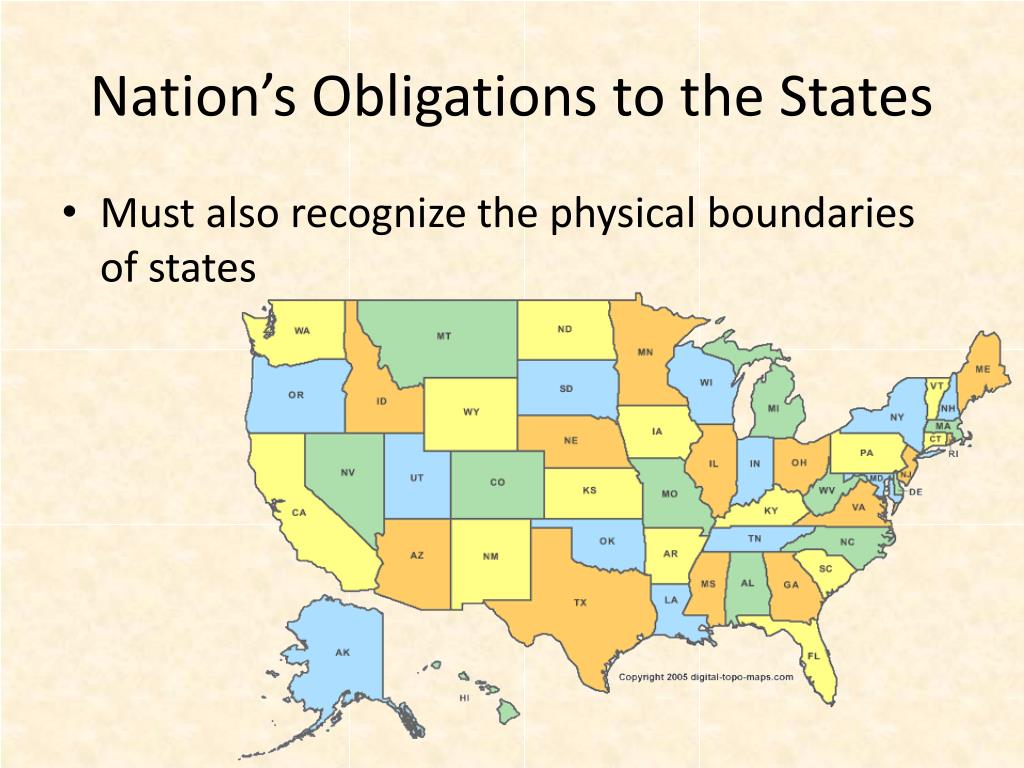 You don't have to share your wardrobe with your sister or let your car be used just because someone claims to be your friend (by the way, real friends rarely cross your boundaries).
You don't have to share your wardrobe with your sister or let your car be used just because someone claims to be your friend (by the way, real friends rarely cross your boundaries).
Here's what it might look like in practice:
- "No, I can't give you my car for the weekend, I have my own plans for it"
- "I can give you my dress, but it must be returned by next Friday, and the dry cleaner is yours"
- "Unfortunately, we can no longer help you with money, but we can offer our support in other ways"
Material boundaries are violated when someone takes your things without permission, breaks or damages them, or simply abuses your resources too often.
Setting boundaries is a process, we learn to listen and understand ourselves better, and to say out loud what has been left inside for many years. The ability to defend our boundaries has another important effect on the development of our personality: by defending ourselves, we learn to see and respect the boundaries of other people.

Elizabeth Earnshaw
post cover photo: @romankraft
Types of personal boundaries and how to defend them • Articles on the website of the publishing house BOMBORA
- Articles
- June 7, 2022
Holistic psychologist Nicole LePera says
More interesting things below
Holistic psychology is an approach to therapy based on a healthy lifestyle and the main idea: a person is responsible for himself, his health and condition.
“No one heals a person better than himself,” says holistic psychologist Nicole LePera in her book How to Work on Yourself. And create a future that is different from the present.”
Here's what she says about the types of personal boundaries and how to learn to defend them.
Physical Boundaries
Weak physical boundaries can manifest themselves through obsession with appearance: a person sees his value mainly in how he looks, how sexy others consider him. Or the other extreme: a person seems to feel "incorporeal", does not pay attention to his body and its needs.
Or the other extreme: a person seems to feel "incorporeal", does not pay attention to his body and its needs.
To normalize the boundaries, you need a lot of work on yourself. The goals of such work are to learn to hear your body, respect your needs, desires, unwillingnesses, be aware of your personal space and designate it for others. A small step in this direction is self-care: getting enough sleep, exercising, adjusting the daily routine.
Resource boundaries
If we are “always in touch” with relatives, friends, colleagues, bosses, the parent committee, the housing office and the dog club, most likely we are not able to defend the boundaries of our resource. Other symptoms: endless giving, extreme generosity, inability to refuse. The result is an unequal, draining exchange with all of the above. And time, which is not on itself. And time is a valuable resource.
To restore the resource boundaries, you also need to work hard. First of all, you will have to understand yourself and understand where the installation for such dedication grows from. Maybe we were once hammered into our heads that this is the only way to earn love. Maybe we absorbed this manner with mother's milk. Only by understanding the cause, you can work with the symptoms. And you can start by putting all your chats on silent mode. At least the dog club. Well, the parent committee :)
Maybe we were once hammered into our heads that this is the only way to earn love. Maybe we absorbed this manner with mother's milk. Only by understanding the cause, you can work with the symptoms. And you can start by putting all your chats on silent mode. At least the dog club. Well, the parent committee :)
Emotional boundaries
When there are no boundaries of this type, we feel responsible for the condition of others, we strive to save and make everyone happy. But it is impossible to make the other person always happy - this is an unattainable goal, which ultimately leads to the neglect of personal needs.
Emotional boundaries allow you to separate yourself from others, to grow up. Paradox: the better our emotional boundaries are tuned, the easier it is for others to work with us. With boundaries, we hear intuition better, manage our moods, and share our thoughts and feelings with others more calmly. There is no need to please or agree.
Detailed tips and practices on how to build up emotional and other boundaries and become a better psychologist for yourself can be found in the book How to Work on Yourself.


